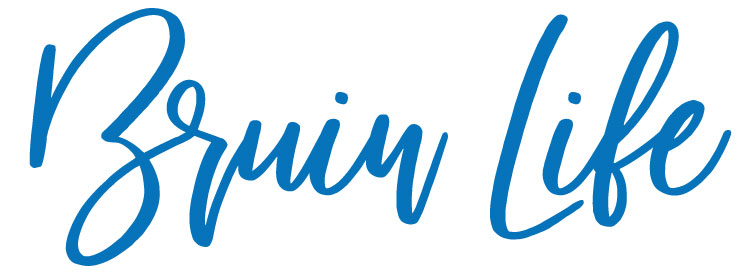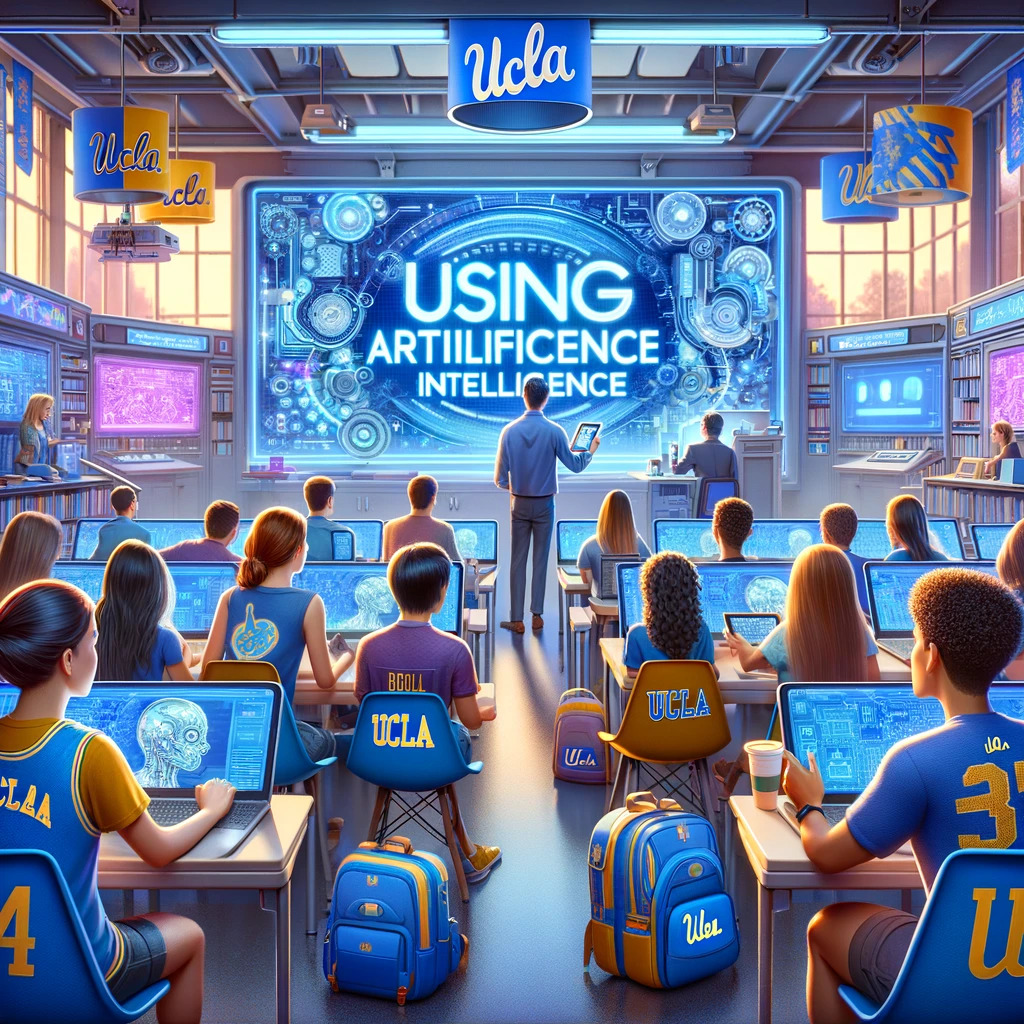The use of AI is already occurring in the art classrooms at UCLA, as more and more faculty members are making attempts to incorporate AI into teaching. Professor Daniel Scott Snelson, a writer, editor and archivist, is an assistant professor in the Departments of English and Design Media Arts at UCLA, where he also serves as faculty for the Digital Humanities Program and The Game Lab. Snelson has been experimenting with AI in his classrooms; he offered a course entitled “Algo-Lit: An Introduction to AI Literature” in the English Department in the Fall 2023 quarter and integrated AI in his teaching in the “Introduction to Comics” class. “One of the things I like to note about generative AI is that it’s this big amorphous collection of knowledge—incomprehensible amounts of knowledge,” said professor Snelson as he explained why he chooses to use AI in his teaching approach, “and so a lot of the work I’ve been doing is trying to figure out what that knowledge looks like.”
Gloria Zhang, first-year student majoring in film and television, also has experience using AI in the “Film TV4″ class she had in the fall. According to Zhang, one of her class assignments was to prompt Chat GPT to write a mise-en-scène of a teenage film and critique it. “In my major, we are not allowed to use AI on most of the papers and assignments,” Zhang said. “The only occasion where we are allowed to use AI is when we are required to.”
But does using AI in art classrooms really make a difference? What signifies the distinction between AI-generated artwork and artwork created by humans? Both Zhang and Snelson and have different perspectives on the effect of using AI in artistic education.
While Zhang agrees that prohibiting the use of AI is a good policy because it encourages her to write her own works with ingenuity, Snelson sees AI as a positive facilitator of learning arts. “We are every day seeing the effect AI is having on war. We see its effects on surveillance, financial tech, medical tech and insurance. AI is already governing our lives in ways that we can’t begin to understand,” he said, “and so I think one of the roles of a university like UCLA is to try to push our students to understand and critique the systems of power that end up structuring our lives. And ideally, all of this is to try to study AI, even to use AI to study AI, to think toward more just futures.” In Snelson’s perspective, AI can act as an all-knowing advisor for art students and alter its functions according to individual students’ perspectives. In a time where AI is consistently upgrading and evolving, he holds that it is important for educators and students to recognize its necessity and to “imagine and speculate on the forms that this new technological tool is going to introduce to aesthetics in the same way that we have come to know how the internet has profoundly changed how art has functioned since the 90s.”
The power of AI on arts is indisputable as AI technology nowadays can not only produce themed illustrations but also create lengthy pieces of literature within seconds. However, there are still limitations as to where AI can go in the process of art creation. “Sometimes you can still distinguish the artworks generated by AI and by humans—sometimes AI will generate an image with a person who has six fingers, for example,” Zhang said, “and I think that is because AI-generated works are still simulating humans. You can perceive the trace of other human artists in its works.” Snelson, with his expertise and passion for the relationship between AI and humans, supports Zhang’s perception. “A lot of the types of work that generative AI makes are modeled directly on the human works that the data sets have been trained with,” said Snelson as he explained the underlying logic of AI-generated art, “I think the use of AI comes with a lot of complicated questions. There are a lot of questions over consent and the right of these algorithms to use artworks to produce new work. It also raises all kinds of questions about bias and about what the nature of art is on a fundamental level.”
As for student artists like Zhang, there exists a general refrain from using AI in their creative processes and a preference for human originality over cold-hearted technology—as Zhang said, “Art is less about the content itself but more about the history and the experience behind it. It incorporates someone’s genuine emotions, which is a valuable part that AI cannot possess.” Responding to this concern, Snelson says that there is no need to avoid or fear the usage of AI in artistic realms. The reason why we should use AI art generators, according to him, is “not to entrench the power structures that surround us, but to see them more clearly, to demystify them and, by demystifying them, defanging them.”
In discussing where the future will go in terms of the relationship between generative AI and artists, Zhang thinks that while AI may be able to replace some repetitive jobs in the industry, it will never be able to substitute content creators. On the other hand, Snelson believes that “generative AI, much like the Internet and other transformative technological inventions, isn’t going anywhere. It’s not going to disappear tomorrow. It’s only going to become more present in our daily lives,” he said.
Specifically for art students living in the age of this thriving technology, it is important not to completely avoid the use of AI, but to think critically about it and to take advantage of it. “It’s one thing to read a New York Times op-ed about the dangers of AI, and it’s a very different thing to use AI—to experiment with it and to experience those dangers yourself,” said Snelson as he mentioned the various resources to investigate deeper into the subject of AI on campus, including the DataX Initiative. “If there’s anything that I would advise students to do, it’s to encourage a hardy amount of experimentation,” he said. The conversation about using AI in art classrooms, after all, is always more about how to use it rather than whether or not it should be allowed.
—
Featured Image generated with ChatGPT. When using AI to generate images that include text, careful oversight is needed to ensure that words are spelled correctly as evident in the featured image.

